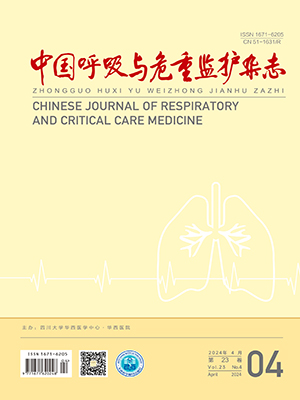Objective To investigate the expression of fibroblast activation protein( FAP) in mouse pulmonary fibrosis and the relationship between FAP and trarisforming growth factor β1 ( TGF-β1 ) .Methods The mouse model with pulmonary fibrosis was established by intratracheally instillation of bleomycin. The expressions of FAP, α-smooth muscle action( α-SMA) , and TGF-β1 in lung tissues were detected with immunohistochemical technique. Results There was no expression of FAP in the normal lung tissue. In the pulmonary fibrosis mice, FAP was found in the fibroblasts existed in bronchiolar adventitia or peribronchiolar ( and perivascular) connective tissue. In the fibroblast foci, the localizations of α-SMA, TGF-β1 , and FAP were similar, but the expression of FAP was more extensive than that of α-SMA and ber than that of
TGF-β1 . The degree of lung fibrosis was bly correlated with FAP, α-SMA, and TGF-β1 ( r = 0. 795,0. 766,0. 628; P lt; 0. 01) . A significantly positive correlation was also observed between TGF-β1 and FAP( r =0. 706, P lt; 0. 01) . Conclusions FAP is especially expressed in the fibroblast foci in pulmonaryfibrosis and bly correlated with the severity of pulmonary fibrosis. FAP and TGF-β1 possibly play a synergistic role in the progression of pulmonary fibrosis.
Citation: WEI Li,DONG Li,JIN Zhanfeng,FUZhijun.. Expression of Fibroblast Activation Protein in Mouse Pulmonary Fibrosis Model. Chinese Journal of Respiratory and Critical Care Medicine, 2010, 9(3): 301-305. doi: Copy




